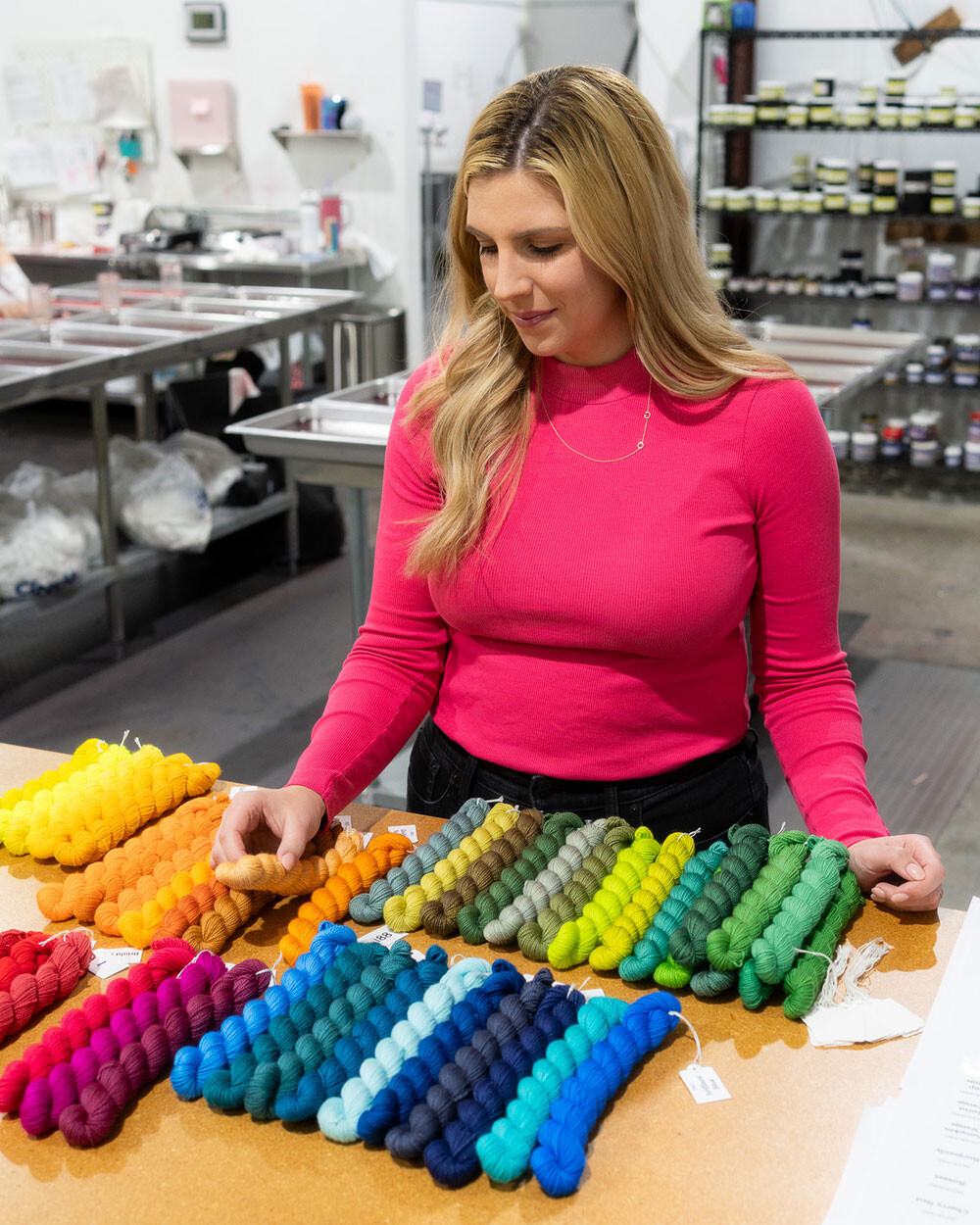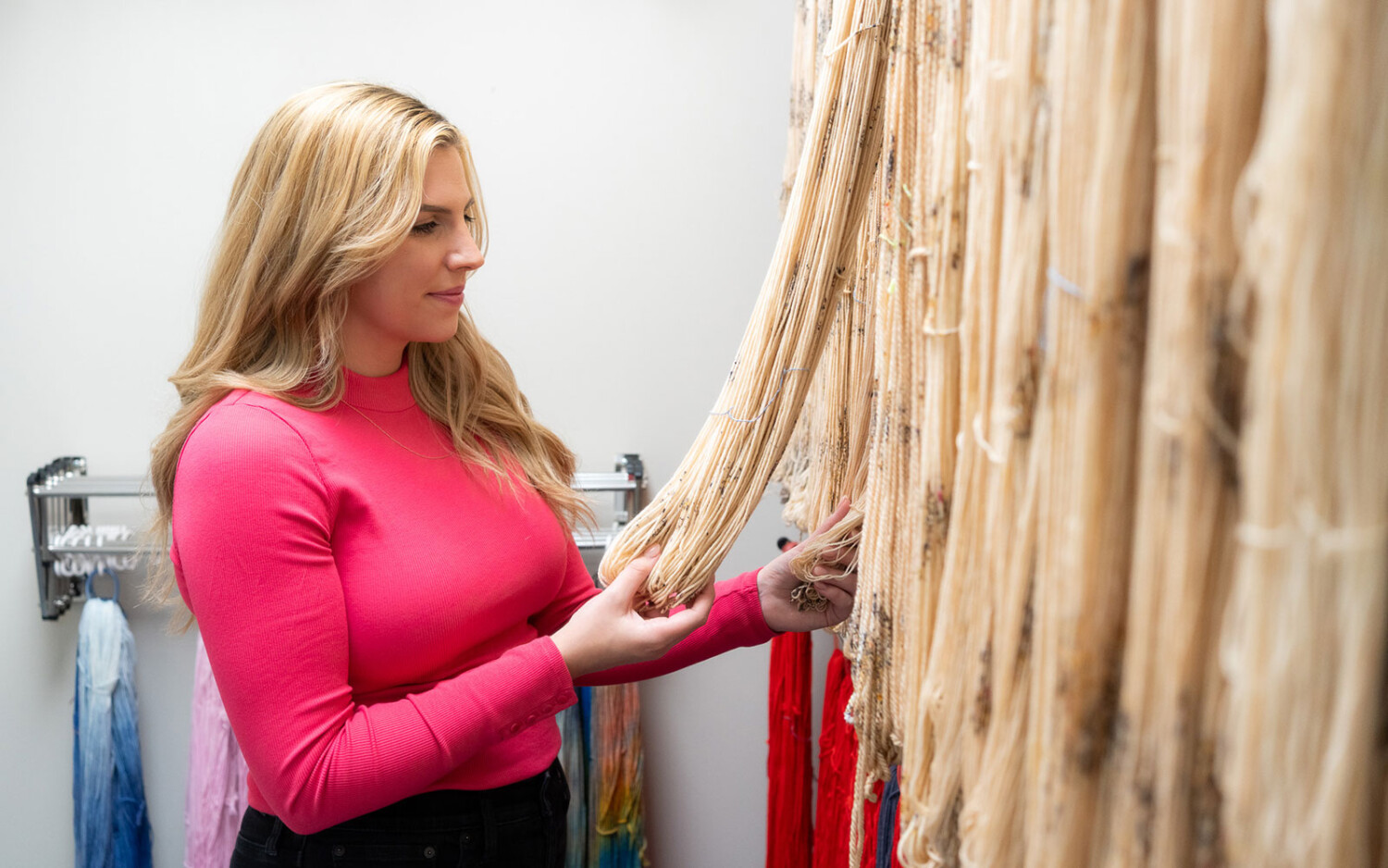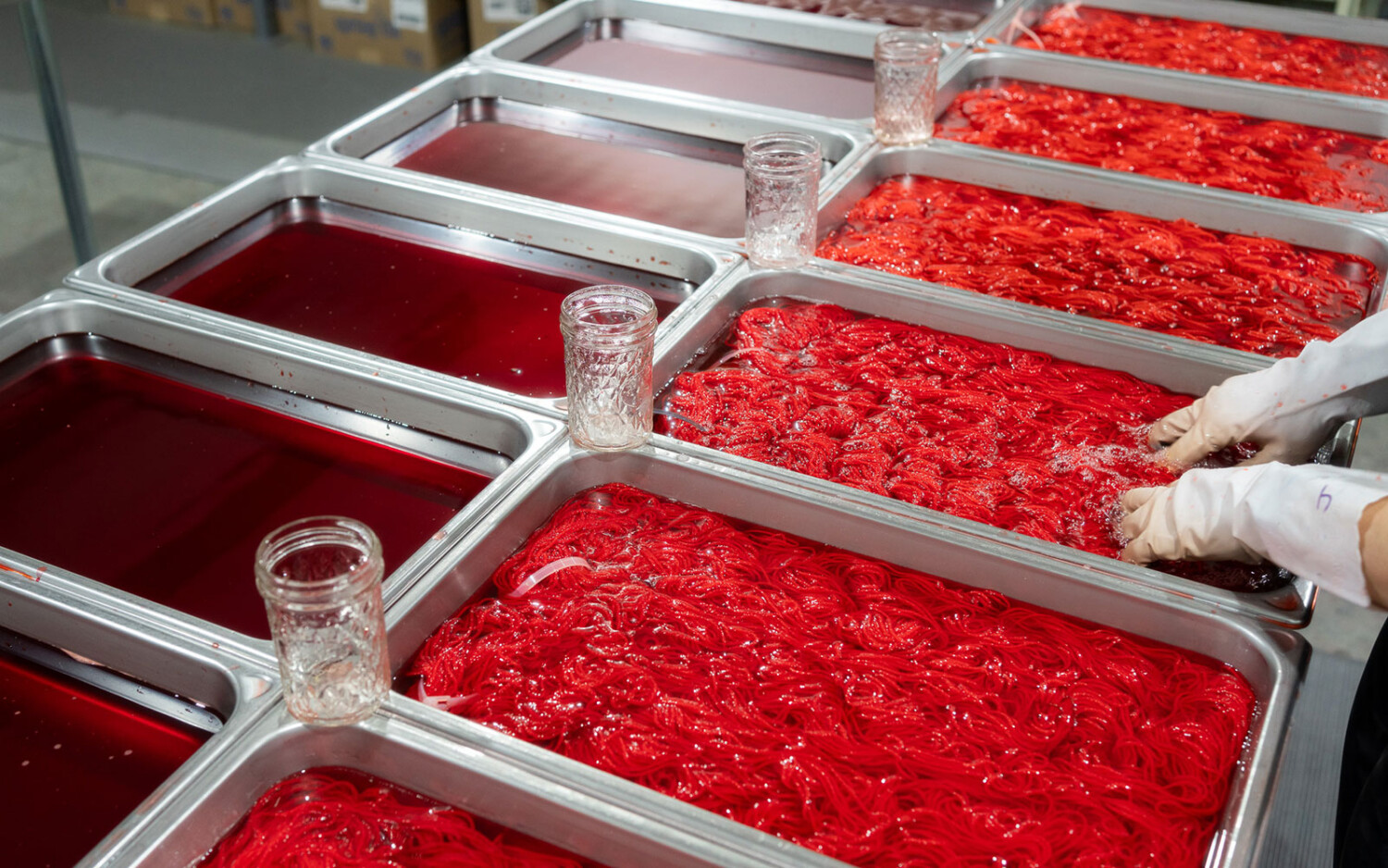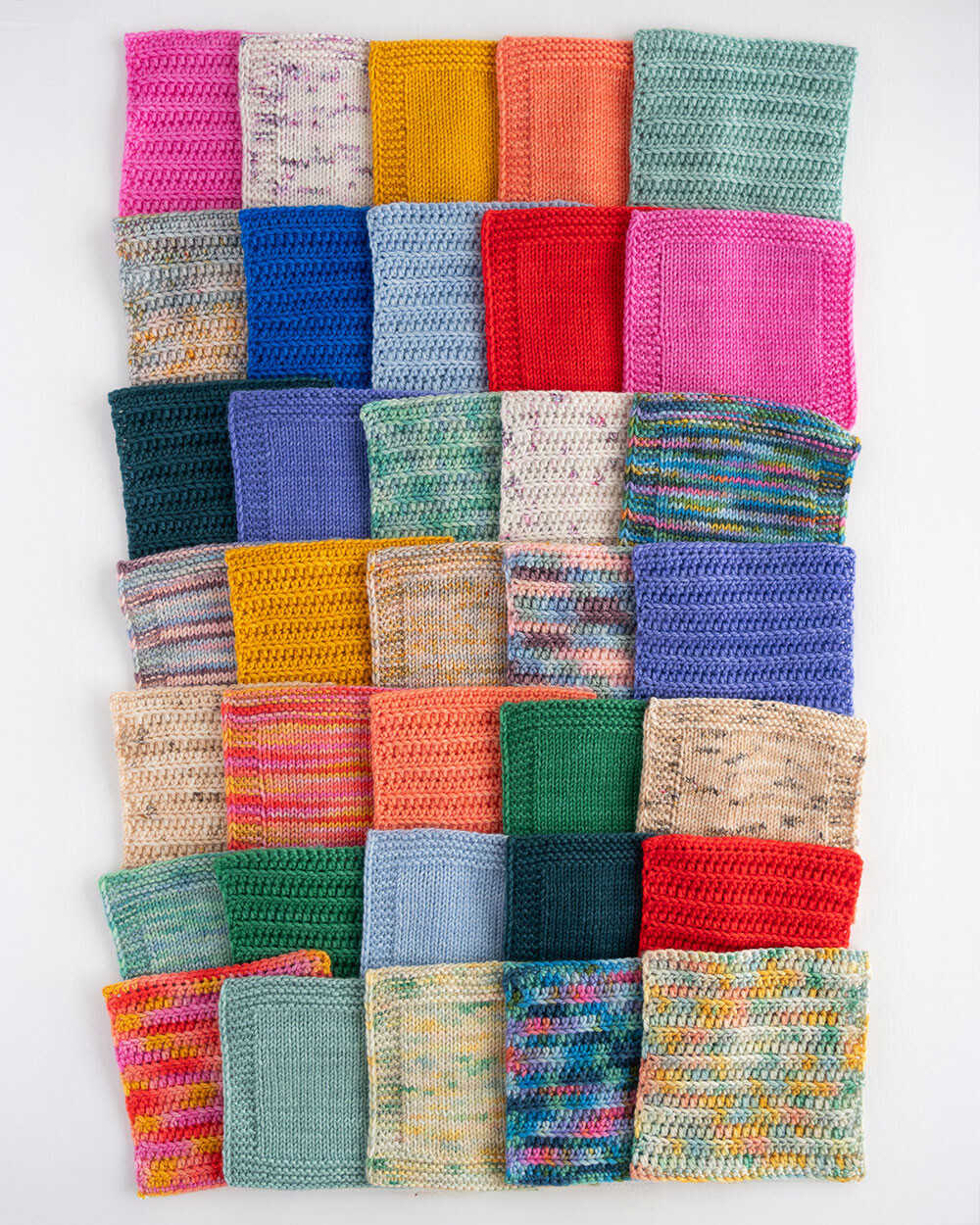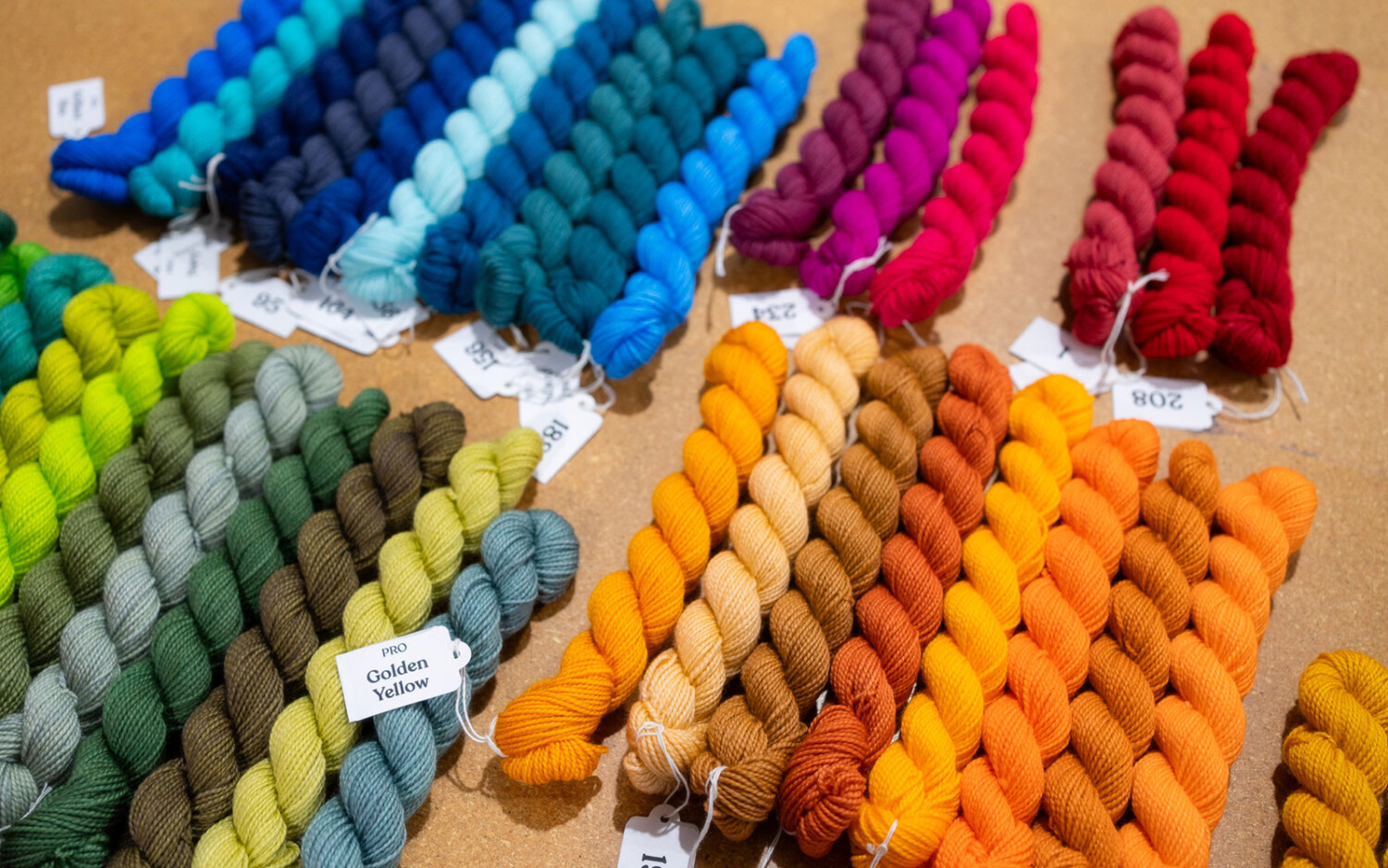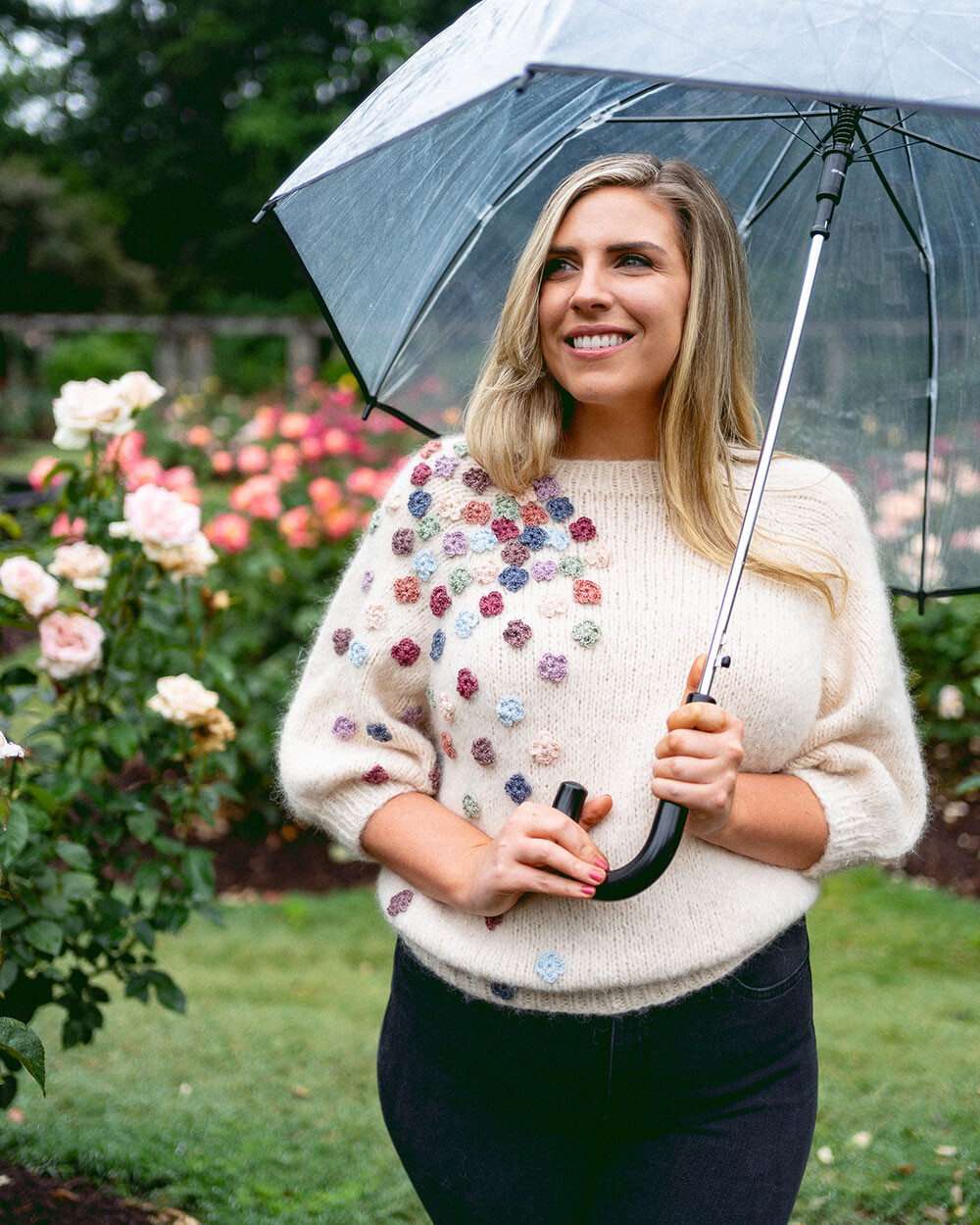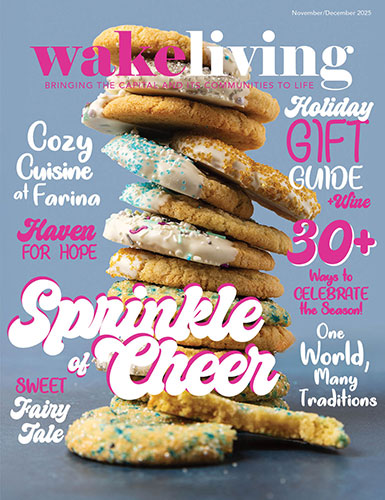Ashleigh Kiser knows how to spin a yarn. The hand-dyed collections of Sewrella Yarn tell stories the former English Literature student once only dreamed of crafting. “A creative career,” Kiser explained, “always felt like something reserved for extraordinarily lucky people.” What she’s learned is that fortune favors hard work.
So pull up a chair. Here’s Kiser’s story.
Please introduce yourself!
I’m Ashleigh Kiser, the owner and creative director of Sewrella Yarn. I’m also a mom of three brilliant little boys, wife to my partner and co-owner of SY, avid sourdough bread baker, English rose gardener, and lover of every arts-and-craft project imaginable.
Dyeing yarn started as a hobby for you — how did you come to open your own studio?
When I was pregnant with my oldest in 2016, I started a blog and shared the things I was making for my baby. A little hat got rave reviews on Pinterest, which attracted big yarn manufacturers to hire me as a contract knitting and crochet pattern designer. By the time the baby was born, I was making a good side income from the blog. Slowly the blog grew, and I became a contract designer for Michaels and JOANN and other yarn companies. My hobby of knitting and crocheting became my full-time job with deadlines and spreadsheets! I’m a big hobby gal, so I needed a new avenue for my creativity — one that was just for me.
I’d shopped at high-end yarn stores before, but in late 2017 I watched some YouTube videos, read a book or two, and ordered supplies to try dyeing my own yarn. Being that I already had a dedicated online audience interested in fiber arts, I shared about my new hobby — and people asked if I was selling my yarn or if I would consider making more for them to buy.
I quickly found that I could dye yarn a lot faster than I could knit it. Soon, I started selling my overstock and keeping a recipe notebook. Every batch garnered more of a response and new customers, and eventually we started selling out. At this point, dyeing wasn’t a hobby anymore. I reduced my workload and focused on hand-dyed yarn quality production, finding a studio, and hiring employees. In the summer of 2020, Sewrella Yarn was off to the races!
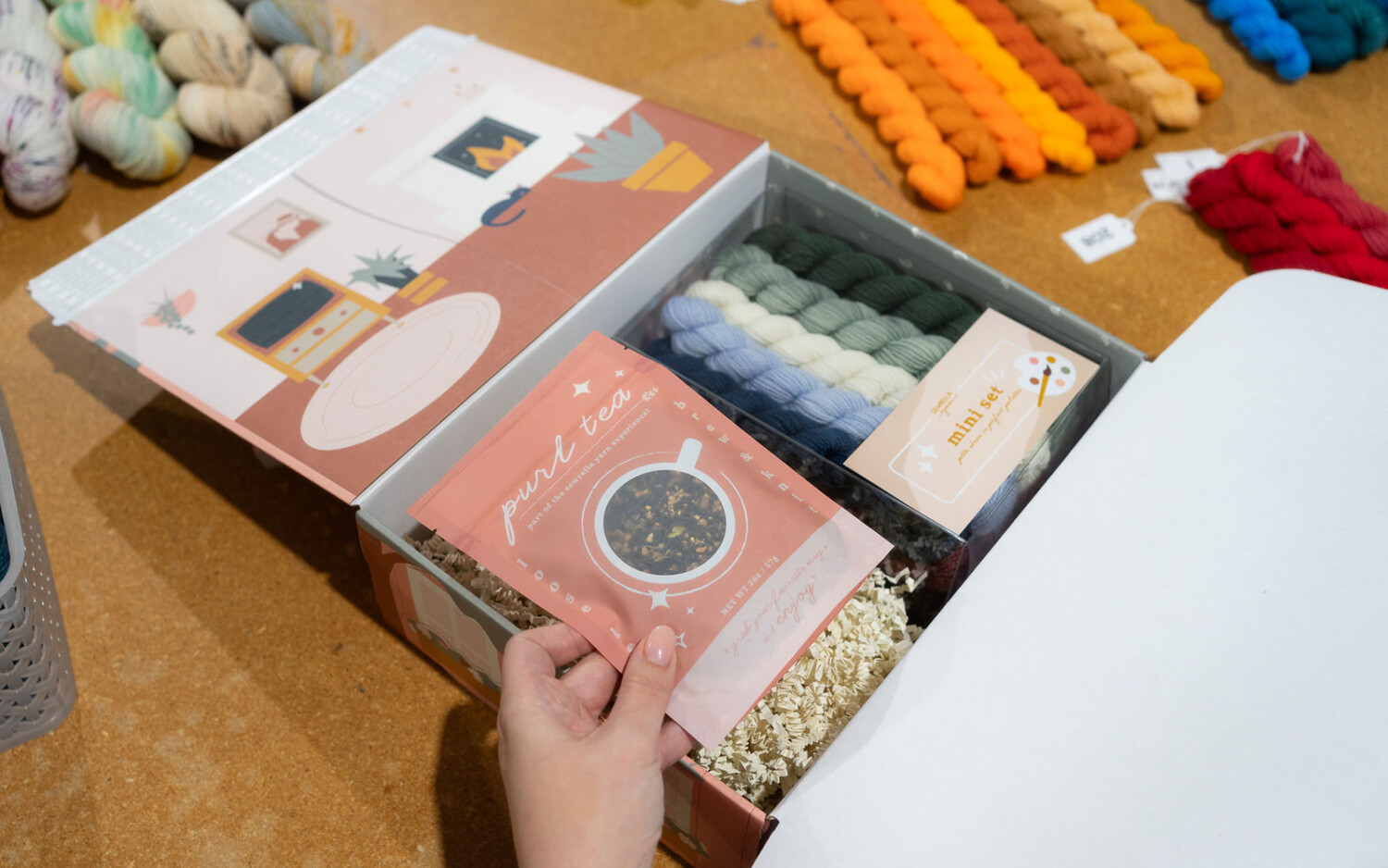
House-made market items for crafters — to include hand cream formulated for makers, wool wash for maintaining handmade pieces crafted with SY yarn, and specialty teas and fragrances that support collections’ themes — are also available.
Give us a crash course in yarn.
Yarn is primarily used for knitting and crochet. Hand-dyed yarn is the crème de la crème of the fiber arts (if I do say so myself!): marrying the highest quality wool and other fibers with the artistry of painting every individual skein by hand. It’s incredibly special, like a little work of art that then gets turned into another form of art in the crafter’s finished projects.
Who are your customers and why do they choose Sewrella?
Our customers are crafters, knitters, and crocheters who love to make sweaters, scarves, hats, and anything else they fancy. They’re extremely patient people with a deep connection to the craft. They create with purpose and thoughtfulness, which is why they love the way we create colorways with story and intention. Our collections always revolve around a central theme from which we draw inspiration. We tell the story of the theme through color, creating a palette that connects the maker to the subject.
Tell us about the SY team.
We have an entirely female studio staff (if you don’t count my husband, who’s always tucked behind the camera) — something I’m proud of. We’ve created a creative, empowering environment where the women who work with us — including Brooke, my sister and SY’s first employee — are always listened to, encouraged, and respected. I believe that if the business is healthy, the margin is there to invest in our staff. Paid time off for all employees, health care, and biweekly team lunches are ways that I can thank them for helping me chase all the big dreams I have for Sewrella Yarn. We are a small family business, and we look after each other like family. We take our work seriously and are dedicated to excellence … but I’d be lying if I said we didn’t have a ton of fun at work, too!
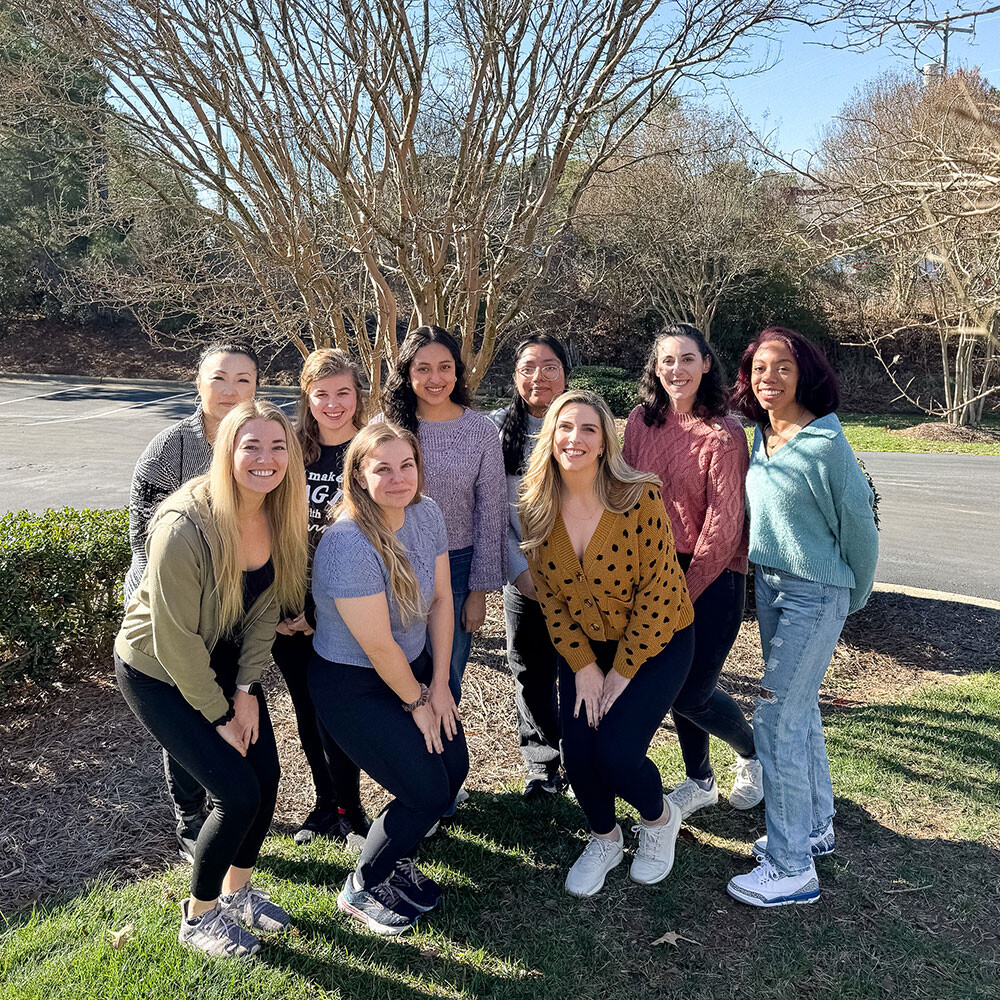
The talented team behind Sewrella Yarn
Can you describe Sewrella’s current space?
When we first leased our studio, we were moving from our spare garage (a real upgrade from the kitchen!) to 1,300 square feet. It felt like Versailles! After only two months, and still growing at an exponential rate, we realized that we couldn’t fit many employees in the space. Luckily, the unit next to ours was vacant and our landlord really liked us. We tore up the old lease, took a second set of keys, and cut out a big doorway in the separating wall to connect the two units.
To run a creative business at the volume we are, you must be a bit of a MacGyver. There are no turnkey yarn-dyeing studios — or even yarn-dyeing equipment! Most of our supplies come from restaurant supply companies or soap material distributors. Our studio was built to work as an accountancy office or car detail shop or something else entirely. Since moving in we’ve painted, added sinks, upgraded the electrical output to accommodate the proofing ovens we use to heat set the dye on our yarn, and added and moved furniture dozens of times. It’s a constant evolution, and we’re always trying to rearrange to gain a few more inches of space or adjust our processes to create better efficiency in the studio.
How much yarn moves through your studio? Walk us through the development and production of a collection.
Thousands of skeins are handmade every month. We typically create a new collection every 4–6 weeks, so we average about 10 collections a year! Each one has around 20 colorways, so we’re making approximately 200 new colorway recipes a year.
Our development begins with annual planning: We look at what we loved and what we didn’t from the year before and plan our collection themes for the upcoming year, ensuring we have a good mix of topics and layout to link any seasonal themes in their appropriate timelines. When it comes time to begin active work on a collection, I start with a digital mood board, collecting my thoughts and bringing in any and every piece of inspiration related to that theme that I can. I isolate the pieces that I’m considering for colorway or storytelling inspiration and start fleshing out the colorways that I want to create.
We then spend several weeks testing our ideas, refining recipes, testing them for production, selecting teas and fragrances that connect to the theme for our market, and organizing sample knit pieces to create kits for projects. We photograph the products — usually with some sort of thematically related flair — promote the collection on social media, complete with intricate storytelling, and overhaul our website for the launch. We open for a weekend and take in enough sales to keep us busy for 4–6 more weeks, several thousand skeins at a time! We produce the preorders in bulk, like an assembly line, each stage of the process being touched every day by different team members, all to be shipped before launching the next collection!
What’s next for Sewrella Yarn?
On top of a year full of collections with a wide range of themes that have recently stretched my creative comfort zone, we’ve been working with an historic North Carolina mill to create our first line of yarn produced outside our studio! This project has been in the works for about a year now and is very different from how we usually create yarn. This yarn is entirely grown, dyed, and processed in the US by a family-owned business just like ours — with heavy-duty milling equipment!
Our customers’ number-one complaint about our products is the price point. We are priced at a luxury, high-end range for yarn, and we’ve always hoped to create a more accessible option. Keeping with the integrity of what we do, our values, and the quality of our products, we’re so excited about working on this new yarn line. We’ve been creating the perfect color palette, designing labels that tell a story, and making plans to distribute this yarn line nationwide. It’s a huge step for us, and the production potential is nearly limitless! It feels like a new era is on the horizon.
- Restaurant Profile: Sophie’s Grill & Bar
- Liquid Assets: Tangtini
- Liquid Assets: Any Victory Will Do
- Garden Adventurer: Landscaping with Spiders
- Erica Chats: Spring into Summer Fashion
- Small Business Spotlight: Sewrella Yarn
- Nonprofit Spotlight: Cary Players Community Theatre Company
- On Trend: Consignment
- Alive and Painting
- Stay and Play at Pleasant Park
- Things to Do: May 2024
- The Making of a Fashion Designer



